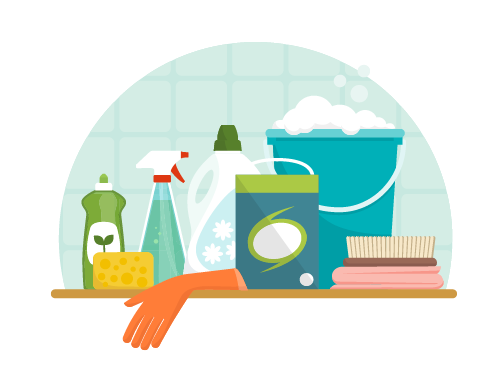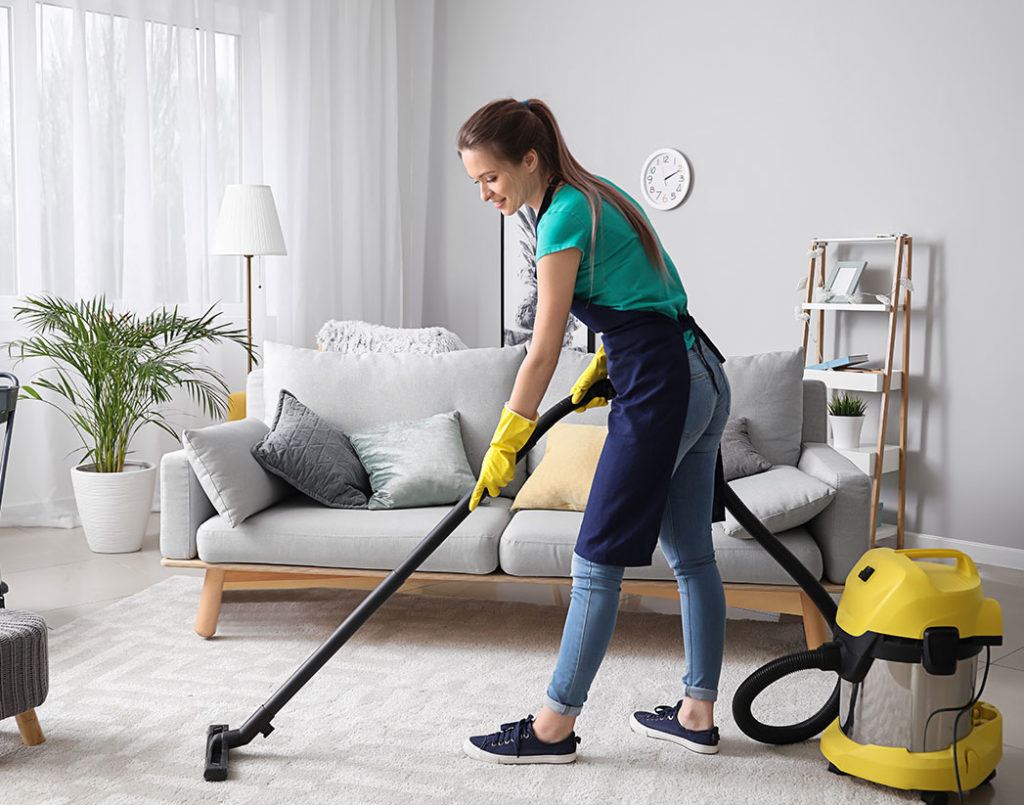The Best Everyday Cleaning Practices: Scrub the Surfaces, Vacuum Carpets, and Keep Clutter at Bay
The Best Everyday Cleaning Practices: Scrub the Surfaces, Vacuum Carpets, and Keep Clutter at Bay
Blog Article
Understanding the Demand for Thoroughly Decontaminating and Sterilizing Regularly Touched Surfaces in High-Traffic Locations
In the realm of public health and wellness and safety and security, the precise sanitation and sanitization of frequently touched surfaces in high-traffic locations stand as paramount actions in stopping the spread of harmful microorganisms. The value of this practice expands far past mere sanitation, diving right into the realm of condition avoidance and area wellness. By exploring the various facets of surface area disinfection, from the threats connected with ignoring cleaning procedures to the efficient methods that can be employed, a more clear understanding emerges of the essential function these practices play in guarding public health and wellness. As we navigate this conversation, it comes to be apparent that the effects of thorough surface disinfection resound not just within the confines of a certain environment yet also resonate on a wider scale, influencing the health and safety of individuals across diverse common setups.
Importance of Surface Area Disinfection
Emphasizing the thorough sanitation of high-traffic surfaces is vital in preserving a hygienic setting and avoiding the spread of harmful virus. High-touch surfaces such as door manages, light switches, lift buttons, and kitchen counters function as reproducing grounds for microorganisms and viruses. Normal disinfection of these surface areas is crucial to decrease the danger of contamination and transmission of illnesses.
By applying a robust disinfection method, companies and establishments can create a much safer setting for visitors, staff members, and consumers. Appropriate surface area sanitation not only alleviates the spread of infectious conditions yet likewise imparts confidence in the sanitation and safety of the properties. This aggressive approach demonstrates a commitment to health and health, which is particularly crucial in high-traffic areas where the chance of direct exposure to pathogens is enhanced.
Moreover, surface sanitation plays a vital role in total infection control strategies. Incorporated with hand health techniques, using masks, and maintaining physical distancing, complete sanitation of high-touch surfaces creates an extensive defense versus the transmission of unsafe microorganisms. Prioritizing surface sanitation is an important component of a holistic approach to health and safety in common rooms.
Dangers of Ignoring Cleaning Practices
Neglecting comprehensive disinfection of high-traffic surfaces significantly heightens the threat of microbial and viral contamination, positioning a serious threat to the health and wellness of individuals often visiting these rooms. Failure to implement correct cleansing methods can lead to the buildup and spread of dangerous microorganisms, including microorganisms and viruses, on frequently touched surface areas such as doorknobs, handrails, elevator switches, and countertops.

Additionally, disregarding the value of extensive cleaning not just compromises the health of individuals yet likewise threatens efforts to keep a sanitary and clean atmosphere. It is essential to recognize the importance of correct sanitation protocols in protecting against the spread of infections and protecting public wellness.
Efficient Sanitation Methods
To preserve optimum tidiness and lower the risk of contamination on high-traffic surface areas, using effective disinfection approaches is important. Among one of the most reliable and common disinfection techniques is making use of chemical disinfectants. These products can vary in toughness and make-up, with some targeting particular microorganisms like microorganisms or viruses. It is vital to adhere to the manufacturer's directions for appropriate dilution, call time, and air flow when using chemical disinfectants to ensure their efficiency click over here - Everyday cleaning.
Another effective method is the use of UV-C light. UV-C light has actually been revealed to be reliable in eliminating a large variety of bacteria by interrupting their DNA framework, therefore avoiding them from replicating. However, it is important to dig this utilize UV-C light correctly, making sure that the right strength and direct exposure time are applied to accomplish the preferred disinfection results.
In addition, utilizing steam cleansing as a disinfection method can be very effective, specifically on surfaces that are heat-resistant. Vapor can permeate permeable surfaces and eliminate bacteria, infections, and various other microorganisms effectively. When utilizing vapor cleaning, it is very important to make sure that the surface area reaches the called for temperature for an adequate quantity of time to guarantee appropriate sanitation.
Influence On Public Wellness
The maintenance of high criteria of cleanliness and sanitation on high-traffic surface areas plays an important duty in guarding public wellness. Often touched surfaces in areas with high step, such as doorknobs, handrails, elevator buttons, and washroom facilities, serve as breeding premises for harmful pathogens.
Effective hygiene techniques not just shield people from dropping sick but also contribute to the overall health of culture. Public health and wellness authorities highlight the significance of maintaining clean settings to avoid episodes and consist of the spread of diseases. In high-traffic areas like airports, colleges, health centers, and public transport systems, the effect of rigorous sanitation procedures can not be underrated. Focusing on the sanitization of often touched surfaces is an aggressive technique to promoting public wellness and improving the safety of people in shared spaces.
Executing Normal Cleaning Procedures
Promptly setting up and sticking to a constant timetable of cleaning methods is vital for preserving the cleanliness and security of high-traffic surface pop over to these guys areas. Regular cleansing methods are vital in preventing the accumulation of bacteria and pathogens on often touched surface areas, specifically in areas with high foot web traffic. By applying a methodical technique to cleansing, organizations can efficiently lower the threat of disease transmission and produce a much healthier setting for employees, customers, and the general public.
To develop a reliable cleaning schedule, it is important to recognize high-traffic locations that require frequent attention. These areas may consist of doorknobs, hand rails, lift switches, toilet centers, and common equipment. Implementing a routine cleaning regimen that targets these surfaces several times a day can substantially minimize the spread of unsafe microorganisms and infections.
Moreover, utilizing appropriate cleaning agents and anti-bacterials is key to ensuring that surfaces are thoroughly sanitized. Normal training of cleansing team on correct cleansing strategies and the value of adherence to the cleansing routine is likewise important in preserving a hygienic environment. By prioritizing consistent cleansing methods, companies can promote the health and well-being of people that engage with these high-traffic surfaces.

Conclusion
In final thought, it is essential to focus on detailed disinfection and sanitization of frequently touched surface areas in high-traffic areas to prevent the spread of unsafe microorganisms and maintain public wellness. It is vital to acknowledge the significance of keeping clean surface areas in high-traffic areas to make certain the wellness of the community.
In the world of public health and safety and security, the precise sanitation and sanitization of often touched surface areas in high-traffic areas stand as paramount procedures in preventing the spread of unsafe microorganisms. By discovering the various elements of surface disinfection, from the threats connected with disregarding cleaning procedures to the reliable techniques that can be used, a clearer understanding emerges of the essential role these methods play in safeguarding public health and wellness.In addition, employing heavy steam cleansing as a sanitation method can be extremely reliable, especially on surfaces that are heat-resistant. When making use of vapor cleaning, it is essential to make certain that the surface reaches the called for temperature for a sufficient amount of time to assure appropriate disinfection.
In conclusion, it is important to focus on complete sanitation and sanitization of regularly touched surface areas in high-traffic areas to avoid the spread of damaging virus and keep public wellness.
Report this page